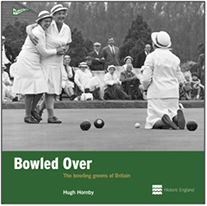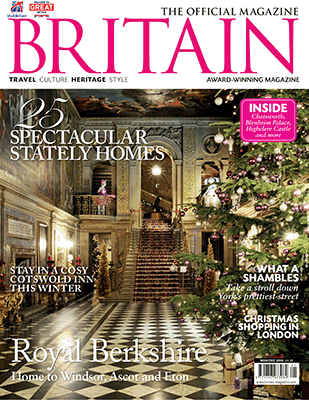
A new book on the history of bowling in Britain reveals a side to the British that is little known. Here author Hugh Hornby divulges.

When people think of British heritage, what springs to mind? The Royal Family perhaps, ancient castles and grand stately homes, or the seaside resorts and public parks made for all to enjoy. In a sporting context, football and cricket are generally considered our national pastimes. But what of the gentle game of bowls and its place in the fabric of Britain?
Widely played throughout these islands since the 16th century, bowls was well-established by 1588, when Sir Francis Drake reportedly insisted on finishing his game before setting sail from Plymouth to deal with the Spanish Armada. In the years that followed, William Shakespeare included numerous bowling allusions in his plays. And monarchs from Henry VIII to Charles II were enthusiastic participants, the latter putting his name to the first laws of bowls in 1670.
Many large houses, like Chatsworth in Derbyshire, Cockermouth Castle in Cumbria and Wollaton Hall in Nottingham, had their own greens in the 17th and 18th centuries, when bowling was all the rage among the aristocracy. By the 1750s, the first clubs were being formed, with dining and drinking usually a key part of the gathering.
A second wave of popularity from the late 19th to the mid 20th century ensured that bowls became a common feature of those parks and seaside resorts, as well as at hundreds of pubs and works’ social clubs. In fact, there are very few areas of British heritage that do not encompass the game of bowls.
Bowling greens are found everywhere, from small villages to big cities, with the flat green code dominant in Scotland and the south of England and a big chunk of crown green territory, where bowls is played on undulating ground, sandwiched in between. Yet they are easy to overlook. Many of our 7,500 bowling clubs exist happily while being barely noticed by their neighbours. It is time the game was given the recognition it deserves.
Bowled Over: The Bowling Greens of Britain by Hugh Hornby is published by English Heritage as part of the Played in Britain series.
Download BRITAIN Magazine to your mobile today

 No mobile device? Purchase directly on Zinio for your desktop!
No mobile device? Purchase directly on Zinio for your desktop!







 © 2024
© 2024